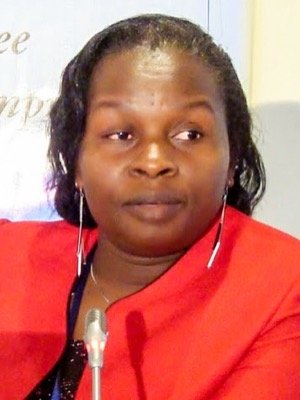Achieving peace and development through scientific innovation
November 10 marks World Science Day for Peace and Development.




This post is the 12th in a blog series published in 2019 in the context of a collaboration between the Association for the Development of Education in Africa (ADEA) and the Global Partnership for Education.
The first World Science Day for Peace and Development was celebrated worldwide on November 10, 2002 under UNESCO auspices. The rationale for celebrating that day has its roots in the importance of the role of science and scientists for sustainable societies and in the need to inform and involve citizens in science. This year’s theme is "Open science, leaving no one behind."
Innovation is strictly connected to investment in STEM
Scientific innovation forms the basis for sustainable socioeconomic development and peaceful societies. World population is growing at a rate of around 1.08% per year, down from 1.14% in 2016. The world is expected to gain 82 million new people per year, and yet is facing various challenges such as climate change, inadequate resources, nutrition, health and diseases. Scientific innovation competencies have the potential to transform societies because competition for resources continues to grow and only innovative minds will enjoy the fruits of the future of work.
As we celebrate World Science Day, we should ask: how can we tap the potential of youth through deliberate efforts that equip them with scientific innovation competencies to transcend developmental challenges?
Inadequacies in human resource capacities contribute to delayed peace and development. The capacity of youth to innovate is hampered by low investment in science, technology, engineering and mathematics (STEM).
Most developing countries fail to provide structured programs for out-of-school youth who, for various reasons, didn’t complete their formal education. On the other hand, enrollment in STEM subjects is inversely proportional to the demand for STEM skills. This narrative ought to change in view of the global and continental aspirations in regard to sustainable development and youth dividends.
Teachers as agents of change
Innovation embodies creative thoughts, new imaginations and application of better solutions to meet existing needs. Scientific competencies refer to specific aspects of intuition and expertise in utilizing science to solve real life problems.
These include specific skills, attitudes, knowledge and practices that are accumulated over time by an individual. Type of teaching and learning practices become a priority in this discussion owing to the foundation laid during schooling. Some school systems merely produce examination grades useful for career placement of individuals instead of meaningful learning that translates to peace and development.
In an endeavor to inculcate learner competencies in scientific innovations, Kenya and other African countries continue to step up efforts towards human resource capacity development. Teachers as agents of change are at the center of this effort aimed at linking policy intentions to classroom practices and the school culture.
The Centre for Mathematics, Science and Technology Education in Africa (CEMASTEA) spearheads continuous teacher professional development programs in STEM education both at national and international levels. Interventions include the process of transforming schools to model STEM, programs for teacher capacity development on gender-responsive STEM education, pedagogical leadership and school culture.
A tangible change is in progress
The process of transforming schools to model the STEM culture of interdisciplinary learning has potential to equip learners with competencies to use scientific knowledge to solve real life problems at individual, school, family and community levels.
Some of the early outputs of these processes have been evident in the African teachers who recently awarded global and continental prizes for scientific innovations. Peter Tabichi, a Science teacher from Nakuru, Kenya, won the Global Teacher Prize during this year’s Global Education & Skills Forum, while Erick Ademba of Asumbi Girls School in Kenya was one of the three receivers of the First African Union Continental Teacher Prize along with Gladyce Kachope, Immaculate Heart Nyakibale Girls School, Uganda, and Augusta Lartey-Young, Presbyterian Boys’ Secondary School, Ghana.
On Peter Tabichi’s teaching methods for instance, it is important to highlight that he started a talent-nurturing club and expanded the school’s Science Club, helping students design research projects of such quality that 60% now qualify for national competitions. Peter mentored his students through the Kenya Science and Engineering Fair 2018 – where they showcased a device they had invented to allow blind and deaf people to measure objects.
Peter saw his village school come first nationally in the public school category. The Mathematical Science team also qualified to participate at the INTEL International Science and Engineering Fair 2019 in Arizona, USA. His students have also won an award from The Royal Society of Chemistry after harnessing local plant life to generate electricity. Peter and four colleagues give low-achieving students one-to-one support in math and science outside class and on the weekends, where Peter visits students’ homes and meets their families to identify the challenges they face.
The award-winning teachers were recognized for creating interventions that solved real life problems among students in schools, thereby reducing the likelihood of negative strife and encourage quality STEM education.
Even if we are still witnessing great disparities across and within different regions and countries when it comes to STEM and innovation, we can affirm that a key change is visible thanks to important steps in the right direction.





